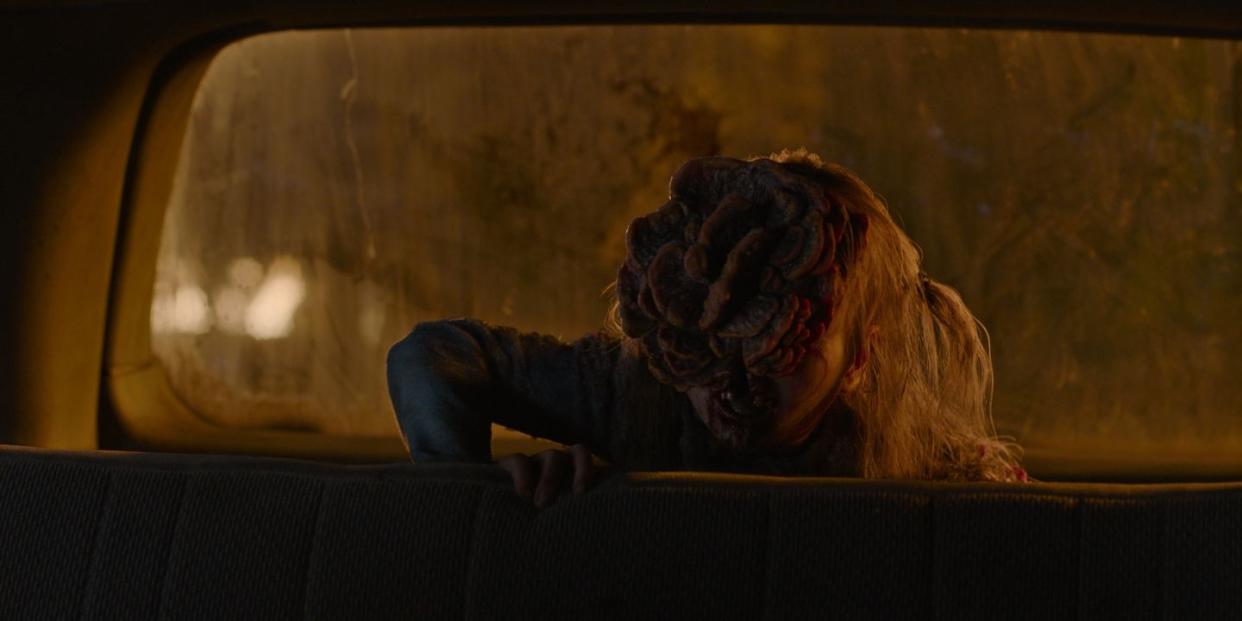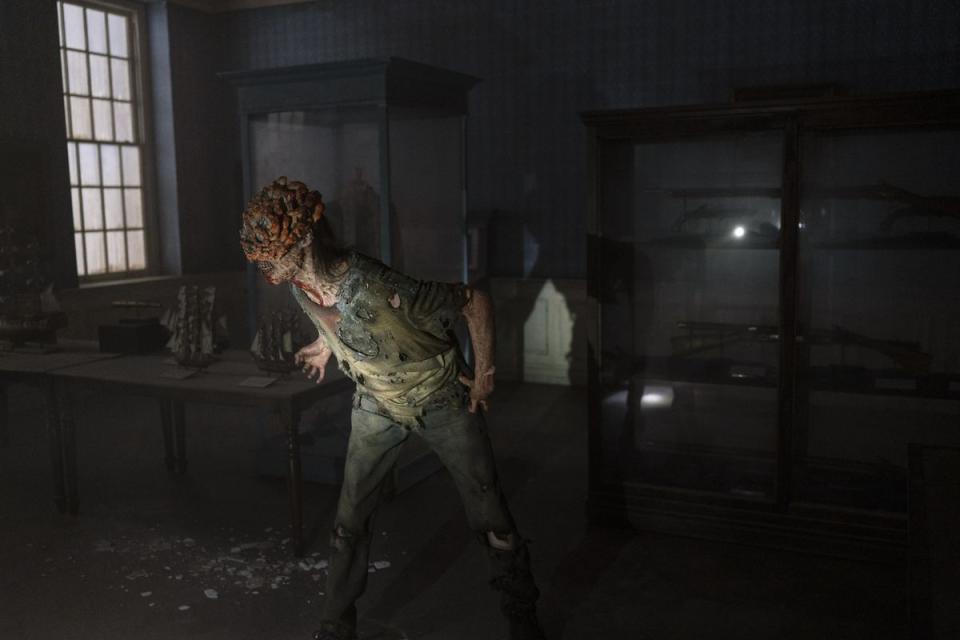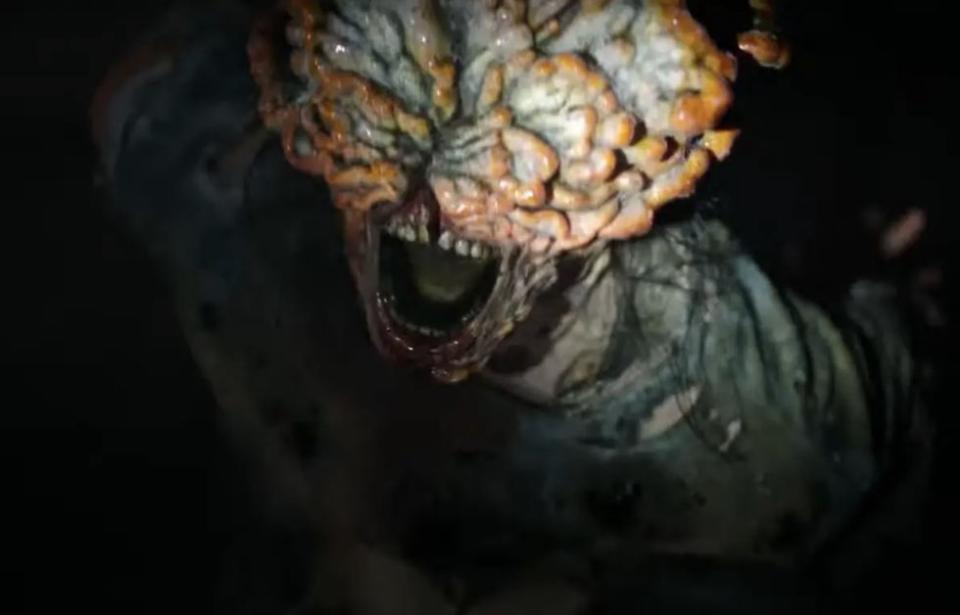A Guide to All of the Infected 'Zombies' on 'The Last of Us'

If you have been tuning in on Sunday nights to watch HBO Max’s The Last of Us, you’ve definitely cried (episode three anyone?) and have probably had a nightmare or two.
Based on a 2013 PlayStation game of the same name, the series is a dystopian drama set in a world where a fungus infection has turned humans into zombie-like entities, and those who have yet to be infected live in quarantine zones run by a strict military. Unlike any other zombie apocalypse, the infected are not dead beings but instead have been taken over by what’s known as the cordyceps infection, a real-life fungus that mutated from infecting animals to infecting humans, which makes it all the more terrifying.
The series follows Ellie (Bella Ramsey), a teenager who after being bitten never became infected, and leads the rebel group known as the fireflies to ultimately find a cure. After running into smuggler Joel (Pedro Pascal), he takes on the task of transporting Ellie to doctors in the West. As the two of them travel through the abandoned cities that once made up the United States, they encounter more and more of the infected, with Joel explaining how they work to the curious Ellie, and us the audience. The more we learn, the more terrifying the show becomes, which has only been enhanced by spending too much time on TikTok where fans of the video game have shared ample information about the different stages of the cordyceps infection that lead to the varying types of infected. Below is what we know about the different stages of infection and where exactly we’ve encountered them in the show so far.
Stage 1: Runners
The first type of infection is the most human-like of the stages and occurs anywhere from 24-48 hours after infection. These are the infected we see in the premiere episode, called runners, who look the most human-like of the bunch because the fungus hasn’t taken over their whole body yet. They become irritable and violent, often moaning in pain, and are defined by their speed and their molted, pale skin, bloodshot eyes, and thinning hair.
One of the scariest parts about this stage is the unknown of how intact the person's mind is, which is often speculated amongst the survivors. They’ll often shriek when attacking, maybe meaning they realize what they’re doing without being able to stop it. It’s a terrifying premise that makes the moment when Sam, a young boy infected in episode 5, asks Ellie “If you turn into a monster, is it still you inside?” so deeply upsetting.

Stage 2: Stalkers
The second stage can take up to two weeks post-infection to reach and is one they remain in for up to a year. It’s a slow transition to stage three, which means the infected become less human-like and start to grow fungus out of their bodies, often losing one side of their face, and begin croaking, though they remain quiet enough to hide and attack victims. In the first episode, Joel and his partner Tess (Anna Torv) come across a dead infected who has grown into the wall. Apparently it’s a more common phenomenon, where stalkers can reach a state of dormancy while fungal tendrils emerge and attach them to the walls before either awakening and attacking or dying.
Stage 3: Clickers

Maybe the most well-known and horrifying of the bunch, clickers are the third stage of infection and take about a year post-infection to reach. At this point, there is almost no resemblance to humans at all, which audiences learned the hard way when Tess, Joel, and Ellie run into two at an abandoned museum in Boston. In place of their eyes and face is a blooming fungus skull, leaving them fully blind and only with a mouth that emits a creepy clicking sound (one that Bella Ramsey imitates quite well) to locate humans and communicate with other infected. They are one of the strongest types of infected due to the fungus serving as an armor on their body and because of how advanced the fungus is, they are obsessive attackers, overwhelmed with the need to find humans when they’re in their presence. They’re hard to kill, so the best option is to quietly sneak away without setting off their echolocation skills.
Stage 4: Bloaters
The fourth stage of infection is one of the rarest but is the most dangerous type of infection and happens several years post-infection. A bloater is almost all fungus, which covers its body and acts as armor plates, and is insanely strong and aggressive. From the entrance of the bloater in episode 5, it’s larger and slower than most other infected, but an encounter with one leaves the human dead 9 times out 10. The only way to defeat one is to outrun it or use fire, otherwise, you risk being torn apart by it. Plus their skin has pockets of toxins that can infect human skin, so it’s best to stay far, far away.
Alternative Stage 4: Shamblers
Like bloaters but mutated when exposed to excess water, we have yet to meet any shamblers in the show, and hopefully never will. As big and strong as bloaters, shamblers have more pus-like toxic spores that they fling at their enemies, often travel in packs, and are just as hard to kill.
Stage 5: The Rat King
New Yorker or not, the idea of a rat king sounds utterly horrifying, but thankfully it’s a level of infection that we probably will not have to meet until at least season 2. Without spoiling, we know that the rat king is the fifth stage of infection and is extremely rare. First introduced in the sequel game, The Last of Us II, the rat king is an anomaly composed of stalkers, clickers, and a bloater. It’s rumored to be some of the first infected, meaning it took over 25 years to form and is nearly impossible to defeat. I, for one, will not be excited to see this grace our screens.
Stage 6: Death
Finally some good news. Infected can die! Whether being killed by humans and injuries or after the fungus has taken over enough of the human body, the infected will find a place hospitable to the cordyceps and the fungus will continue to grow tendrils that can infect others if breathed in enough. But sunlight remains the savior of the day and can dry out the tendrils and dead infected, leaving them officially deceased and unable to infect anyone else. Rejoice!
You Might Also Like

